Written by Nir Shafir
Gazi Husrev-Begova Biblioteka (hereafter GHB) is the largest collection of Islamic manuscripts and documents in the Balkans. Located on the premises of the mosque complex of the same name in Sarajevo, the well-catalogued collection and brand new library is one of the premier locations for the study of the Ottoman Empire in general and the Balkans in particular. At the beginning of 2014, the library will officially open a state-of-the-art building to researchers and the general public.
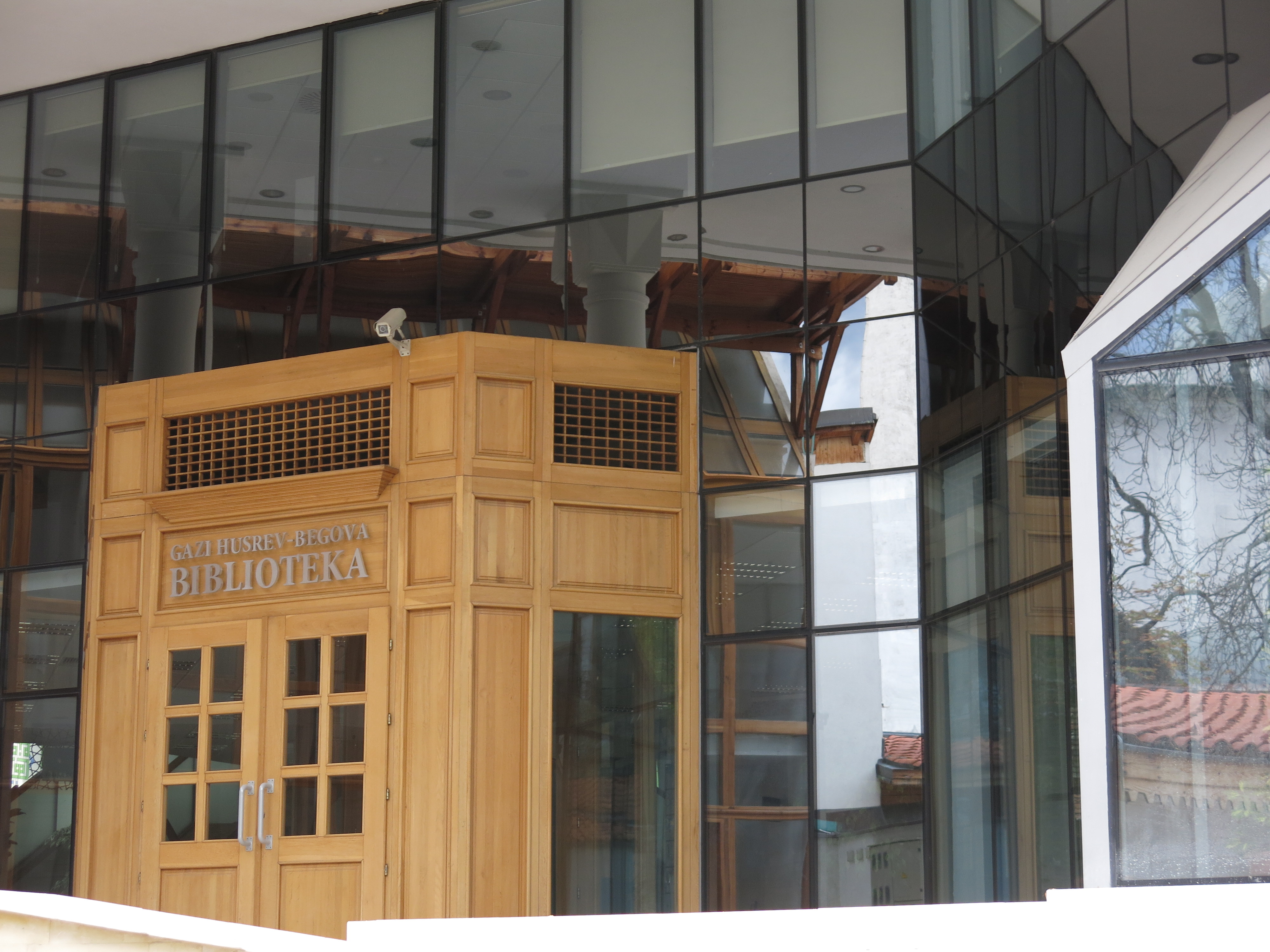
History
Like many manuscript libraries in the Islamic world, the collections of Gazi Husrev Beg Library coalesced as it aggregated the manuscripts and papers of various medresas, Sufi lodges, and private libraries over the years. The complex that houses the library was constructed by that great sixteenth-century benefactor of Sarajevo—the eponymous Gazi Husrev Beg. Starting with a medresa, dzami, hanikah, and a market, it grew to include various tombs and a clock tower displaying lunar time. In 1697, however, Eugene of Savoy razed Sarajevo, supposedly destroying many of the books and ledgers in the process. While the medresa was endowed with a small group of books, a separate library building was only built for the medresa in 1863. (Two other library buildings in Sarajevo predate this library though they are no longer extant.) In the twentieth century, the library began to incorporate the collections of other institutions and private individuals. The first volume of the catalog was published in 1963 and followed by subsequent volumes of equal detail over the years. During the 1991-1994 war, the manuscripts and defters were hidden away in private homes and bank vaults and so they were spared the fate of the Oriental Institute collections, which were completely destroyed in a fire started by the shelling of Serbian artillery. In January 2014, a new, ultra-modern library building, built with the generous donations of the Qatari royal family, will be opened. The al-Furqan Foundation has also supported the continued publication of the high quality catalog. The library has recently completely digitized its collections, which continue to grow today through the donations and bequests of individuals.
Collection
The library’s main collections consist of Islamic manuscripts, printed books, documents such as court records, and photographs. The manuscript collection contains around 10,500 volumes in Arabic, Persian, Turkish, and Bosnian (in Arabic script). Of these languages, the first two tend to predominate. Given that many of the books in Sarajevo apparently did not survive its razing in 1697, the manuscript collection is heavily weighted toward topics, authors, and copies from the eighteenth and nineteenth centuries. The collection seems to include a much higher than average concentration of moralistic, dogmatic, and sermon-like texts than other manuscript collections and so researchers can find a wide array of texts condemning practices like tomb visitation or tobacco smoking. Similarly, there is a large number of manuscripts copied by medresa students, as evinced by the surfeit of treatises on education. While such treatises were popular throughout the Ottoman Empire, the local origins of many of these copies provide researchers a glimpse of the local intellectual

culture. Researchers can gain further insight into this local culture by reading the small but significant number of treatises written in Bosnian, the vernacular of the region. These treatises, too, are often prayer books or moralistic exhortations. At the same time, the collection points to the many Bosnian scholars who traveled to Syria, the Hijaz and Istanbul in the early modern period. There are, of course, a good number of older and more “precious” books and the library’s promotional brochure highlights some of these.
In addition to its manuscripts, the library contains one of the largest collections of early print in the Balkans. The library’s holdings comprise over 25,000 printed treatises in Arabic, Turkish and Bosnian (in Arabic scripts). In addition, it also has a collection of around 35,000 books in Bosnian and other European languages in Latin script.
The library also houses various documents from the Ottoman period. Of these, the most comprehensive are the court records (sijillat) of Sarajevo and the more limited collections for the neighboring cities of Mostar, Tuzla, and Fojnica. For Sarajevo, these records exist primarily for the eighteenth century, starting from 1707 and ending in 1852. Records from before that period are presumed to have been destroyed in the razing of the city in 1697. Three volumes of sixteenth-century court records do exist, however, for the years 1551-1552, 1556-1558, and 1565-1566. For Mostar there are two registers covering 1766-1769, for Fojnica a single register covers the years 1763-1769, and a partial register from Tuzla exists from the first half of the seventeenth century. In addition to this, there are 1,600 endowment charters (vakifnama), 500 as individual documents and 1,100 within the court record defters. Paired with these, there are around 5,000 documents produced by the Ottoman bureaucracy. Library patrons consult these documents as digital copies.
Finally, the library houses a special collection documenting the Muslim community of Bosnia. The community’s archives cover the period of 1882-1993 and complement the large collection of 5000 photographs, postcards, and posters held in the library. The library also holds complete collections of many nineteenth-century Muslim newspapers from Sarajevo.
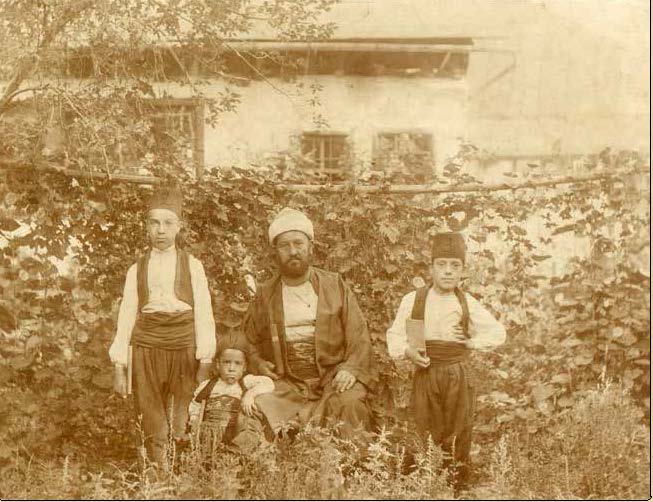
Research Experience
The manuscript collection of Gazi Husrev-Begova Library, along with those of the other manuscript libraries in Sarajevo, bears the distinction of being extremely well-cataloged. The eighteen-volume printed catalog, written by numerous individuals, is essentially divided into two: the first nine volumes or so describe collections present in the library until around 1970 and the second half details acquisitions after that date. In both halves, works are categorized topically. The catalogers made a smart choice to maintain the conceptual unity of each codex: all the treatises in a mecmua, which comprise the vast majority of volumes, are listed after the first entry. Codices are placed under specific topics according to their first work, which means that the topical organization of the catalog is slightly loose. Researchers should browse through indices of every volume of the catalog if they are looking for particular authors or titles. The catalogers were particularly attentive to the details of manuscript production; they mention copyist names, owners, locations, physical characteristics, as well as any unique aspects or contents of a manuscript in each entry. Excellent indices exist for author name (in Arabic and Latin scripts), title, copyist, owner(s), and location. Mistakes, while present, are rare. The catalog is written in Bosnian, but there should also be an English translation available. The catalog often quotes material directly in Arabic, so researchers can simply read the quoted text. There had been an electronic catalog available, although the library removed it recently from its website due to poor performance. In its place, the library is actively developing a new electronic catalog that it hopes to roll out in the coming months.
The printed works in the library have traditionally received less attention than the manuscripts although this is quickly changing. The library has recently finished cataloging them and once the new electronic catalog is online, researchers should be able to access the catalog of printed works. Some of these printed treatises were even part of the collections of the Ottoman-era libraries from the eighteenth century, though the new catalog might not list the original collection name for each entry, and therefore researchers must go through the volumes individually to find this information.
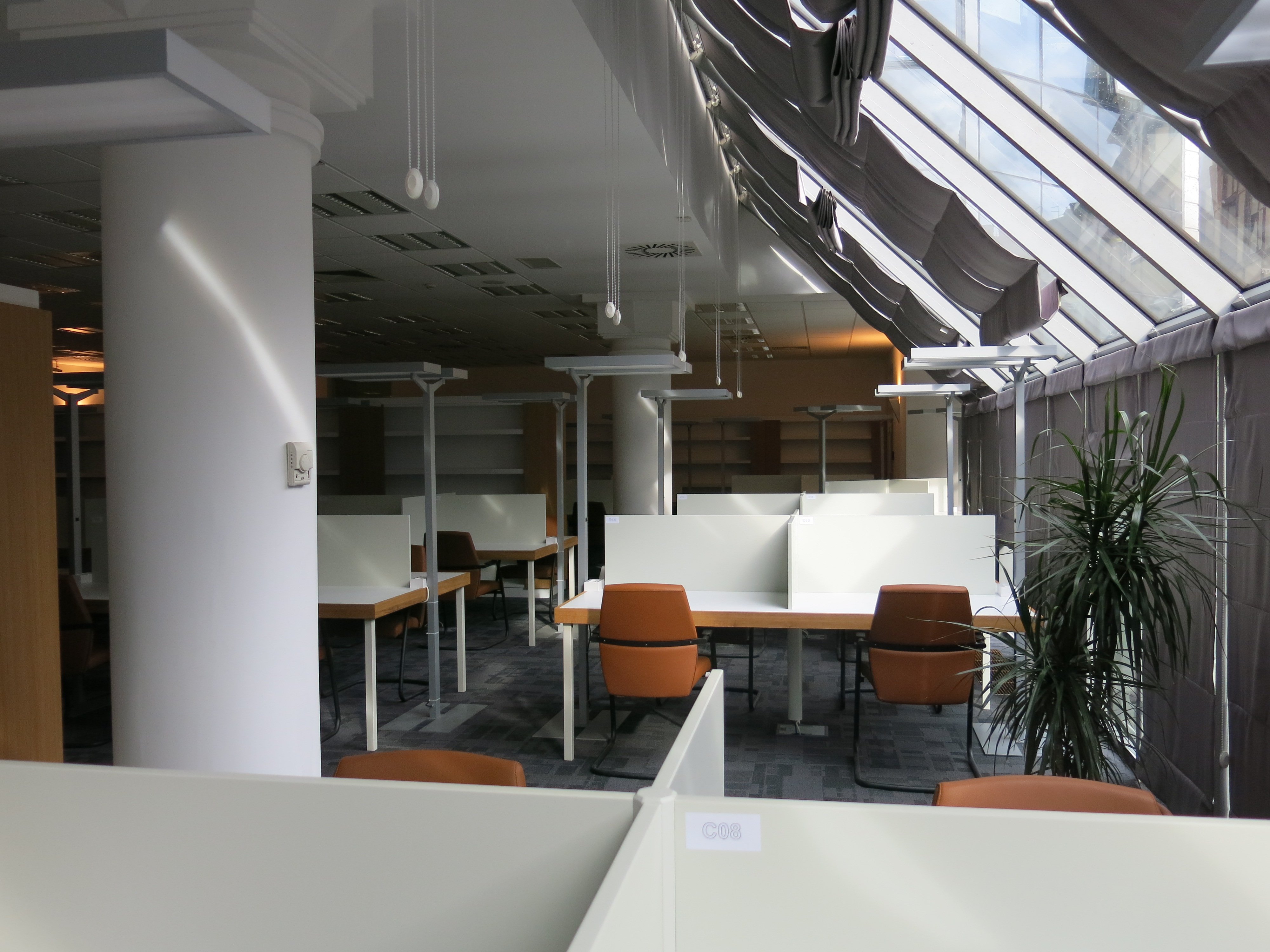
It is very pleasant to conduct research at Gazi Husrev-Begova Library, especially since the opening of the new building. The building has a large general reading room with excellent desks and ample windows overlooking the medresa complex. The desks have good overhead lamps. The reading room should eventually have a large collection of reference material but is empty for now.
To request a manuscript researchers should first browse through the printed eighteen-volume catalog of the library. A Bosnian- and English-language copy of the catalog is kept behind the reception desk and the staff will let you browse a couple of volumes at a time. Once the library introduces the new computer catalog, researchers should also be able to use the single computer terminal at the reception desk to find relevant manuscripts. You must stand to use this computer since it was not set up for consultations longer than a few minutes. Once researchers identify a manuscript they wish to consult, they can fill out a form and request up to twenty manuscripts at a time. After twenty minutes to an hour, the digitized copies of the manuscripts are transferred to a computer terminal in a second reading room behind the reception desk for consultation. If library patrons wish to buy copies of the digitized manuscripts, they must fill out a further form that is then sent to the director for approval. The staff might let you simply delete unwanted files on your terminal and burn the remaining images onto a CD or they might prepare the specific pages you request. Researchers can request to see the physical copy of the manuscript only after receiving permission directly from the director of the library.
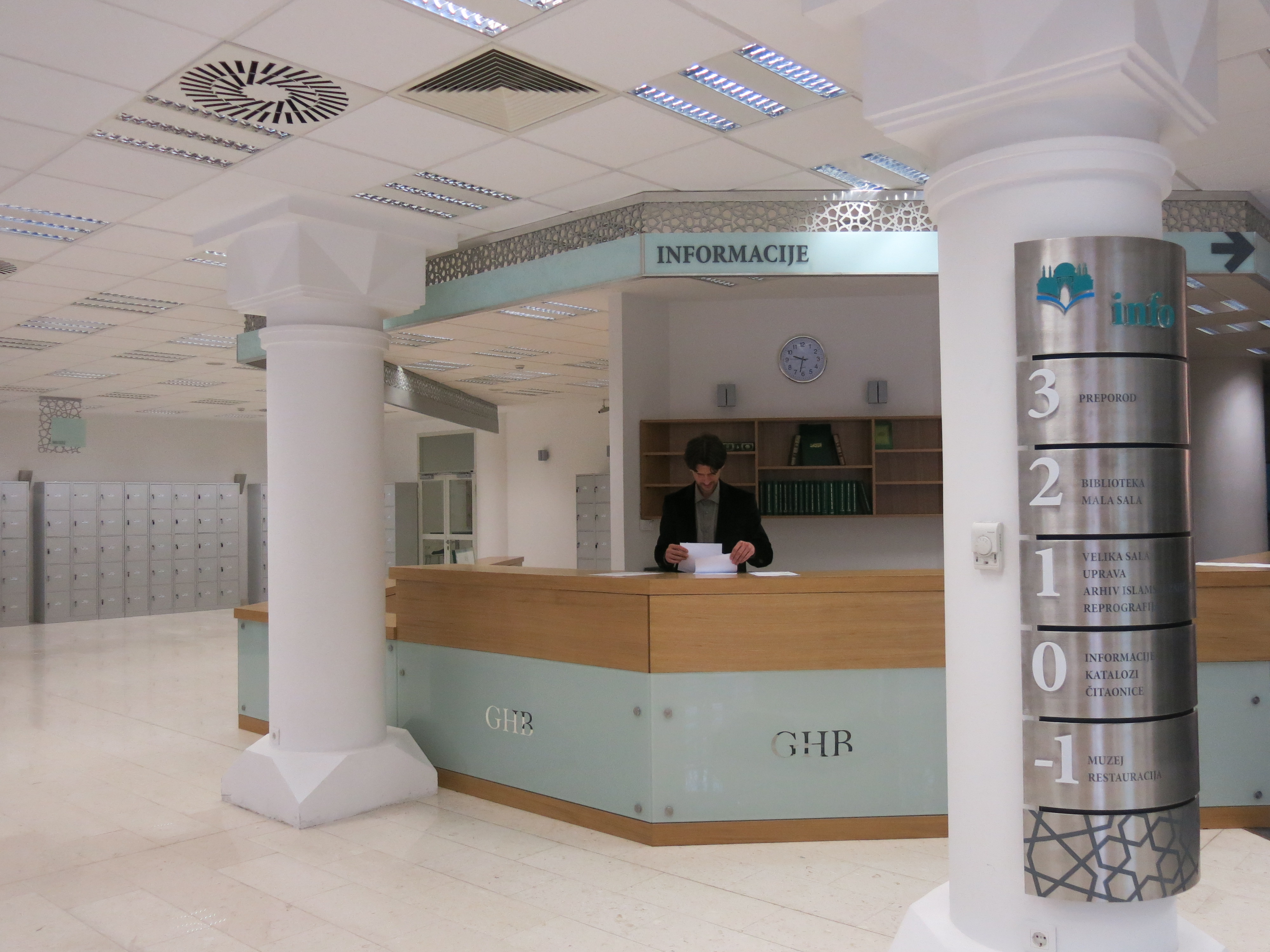
The new GHB library was largely designed with digital research in mind. The quality of the digitized manuscripts is generally high, though there are the occasional low-resolution images. Generally speaking, the binding of a manuscript is photographed though this might be limited to the cover itself. Conveniently, an information slip from the catalog listing its title and author precedes the digital copy of each work, even separate treatises in a mecmua. The only inconvenience is that researchers cannot access the digitized manuscripts directly from the computer catalog.
The staff of the library are extremely helpful and professional. The working language of the library is Bosnian, though employees at the reception desk should be able to speak English, Turkish, or Arabic.
Researchers should note that as the library settles into the new building, new protocols and procedures will be instituted, so some of this information might change in the near future. For instance, there is a large reference library of books in Bosnian, English, Arabic, Turkish, and more available to researchers, but it is not currently on the shelves. The library, however, is constantly striving to improve researcher experience and will make changes as needed.
Access
The library is open Monday to Friday, from 8:00 to 15:00. It is closed on the weekends along with secular and religious holidays. Researchers are advised to talk to the receptionist to keep abreast of religious holidays in Bosnia, which can be a bit different from those in other Muslim countries.
The library, like all research institutions in Sarajevo, is very welcoming to researchers. After a short registration process, in which researchers might need to provide a formal ID, researchers can access the collection.
The main entrance of the library might not be wheelchair accessible, but researchers in wheelchairs should be able to enter from the employee entrance on Mula Mustafe Bašeskije Street.
Reproductions
Digital reproductions are provided in the form of a CD. The price is a somewhat costly at €1 per exposure and the CD will be ready for pick-up three days after the initial request. The delay is a bit odd, since all the material is already digitized, but researchers in a hurry might be able to expedite the process with the help of an accommodating staff member. In the future, the library hopes to introduce a system that will allow researchers to request digital reproductions remotely. Researchers are not allowed to take their own photographs as they are not allowed to see the original manuscript or defter.
Transportation and Food
The library is located in the center of the old city of Sarajevo and is easily accessible by the tram. Researchers can alight at either the cathedral or the last stop— Baščaršija. The very modern looking library building is located in between the two stops, next to the Gazi Husrev Begova Dzamija complex and the Old Synagogue/Jewish Museum. If researchers stay at hotels or hostels near the historic center, the library is easily reached by foot.
There is no shortage of eating options near the library as it is in the center of the historic city. Next door there are a variety of cafes and burek sellers as well as quite a few more touristy restaurants. There is also a small café in the library itself that serves Turkish tea, Bosnian coffee, and espresso.
Miscellaneous
The library also houses a museum in the basement that exhibits certain rare manuscripts and various material artifacts related to writing, reading, and daily life in Sarajevo. Various marble inscriptions from Sarajevo dating from the seventeenth and eighteenth centuries are also displayed in the basement for the time being. There are also conference facilities in the library itself.
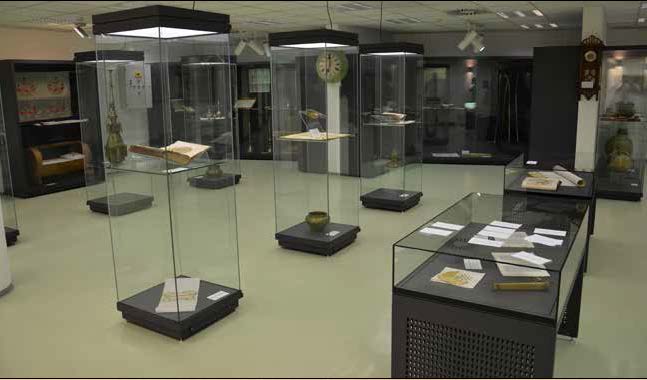
Since 1972, the library has also published a journal titled Anali Gazi Husrev-begove biblioteke, of which free copies are available online. The informative journal highlights the historical research of scholars from the area. Although the journal is written in Bosnian, researchers can render the text searchable and then copy the text into Google Translate for a relatively functional translation.
Future Plans and Rumors
The library will officially open to researchers on January 15, 2014. Some of the protocol listed above will inevitably change as the library streamlines and refines its procedures. As stated earlier, the library hopes to reintroduce a new computer catalog on its website and even provide researchers the chance to request copies remotely.
Contact information
Gaza Husrefbeg no. 46 Sarajevo 71000 Bosnia and Herzegovina
Phone: +387 33238152, +387 33 264 960
Fax: +387 33205525
Resources and Links
Gazi Husrev Begova Biblioteka main site
Annals of Gazi Husrev Begova Library
23 December 2013
Nir Shafir is a doctoral candidate at UCLA researching the intellectual history of the Ottoman Empire during the seventeenth and eighteenth centuries.
Cite this: Nir Shafir, “Gazi Husrev Begova Library,” HAZINE, 23 Dec 2013, https://hazine.info/2013/12/23/ghb_library/
